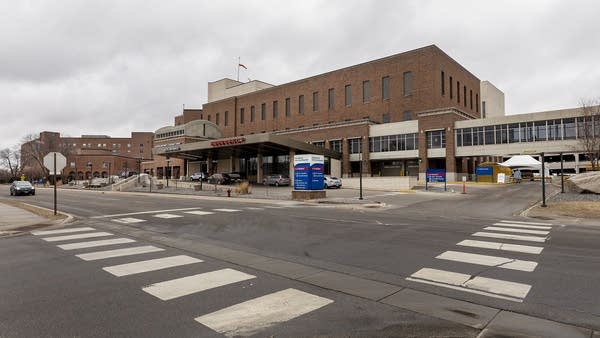CentraCare hospitals feeling strain of COVID-19 surge in central Minn.

Go Deeper.
Create an account or log in to save stories.
Like this?
Thanks for liking this story! We have added it to a list of your favorite stories.
As Minnesota’s latest coronavirus surge spreads across the central part of the state, CentraCare, the region’s main health care provider, is seeing rising numbers of COVID-19 cases in its hospitals.
Almost a quarter of the patients at St. Cloud Hospital have COVID-19, and the intensive care units at CentraCare hospitals are nearly full, with more than half of those cases related to the virus.
On Friday, the Minnesota Department of Health reported 335 new positive cases of COVID-19 in Stearns County, bringing the total number of cases in the county to 7,654 since the pandemic began. Benton, Sherburne, Kandiyohi and Wright counties are also seeing a rise in cases, in part due to increased testing, but also due to greater community transmission.
CentraCare expanded its ICU bed capacity in the early days of the pandemic, but its regular caseload of intensive care patients hasn't stopped, said Dr. George Morris, medical incident commander for CentraCare’s COVID-19 response team.
Turn Up Your Support
MPR News helps you turn down the noise and build shared understanding. Turn up your support for this public resource and keep trusted journalism accessible to all.
"Right now, we are trying to do that balance,” he said. “We have to still care for heart attacks, strokes, trauma, emergencies, people with regular, high-level medical needs. Along with that, we have this huge percentage of [patients] that are in there related to COVID."
CentraCare operates eight hospitals across central Minnesota, including large ones in St. Cloud and Willmar and small ones in towns such as Melrose, Long Prairie, Monticello and Sauk Centre.
Morris said they've made adjustments to handle the surge, including having staff working longer or extra shifts, and moving staff from other medical areas to the ICU. However, he said maintaining sufficient staffing levels is a challenge.
“When the community spread is as wide it is right now, [staff] are likely to come in contact or have a close family member that could be positive, and now they have to quarantine,” Morris said. “So we have a significant percentage of our staff out for testing positive themselves.”
CentraCare also is working with communities such as Alexandria and Brainerd, that typically refer patients to its St. Cloud hospital, so they can treat more patients at their sites, Morris said.
CentraCare hasn’t canceled or delayed all elective procedures, as health care systems did under a statewide executive order as cases climbed back in March. But they are looking into whether some procedures can be safely done elsewhere, Morris said — or might even be delayed by days or weeks.
Morris said the coronavirus seems to be spreading throughout the region, including in rural areas that previously hadn't had many cases. And as community spread of the virus increases, he said, he and his colleagues are seeing more young patients with COVID-19 than they did several months ago.
"We still have 80- and 90-year-olds, but we also have 20-year-olds, 40-year-olds, 50-year-olds in our hospital, in the critical care areas, ICU, and we're seeing that severe illness in our younger population,” Morris said.
COVID-19 in Minnesota
Data in these graphs are based on the Minnesota Department of Health's cumulative totals released at 11 a.m. daily. You can find more detailed statistics on COVID-19 at the Health Department website.
The coronavirus is transmitted through respiratory droplets, coughs and sneezes, similar to the way the flu can spread.


